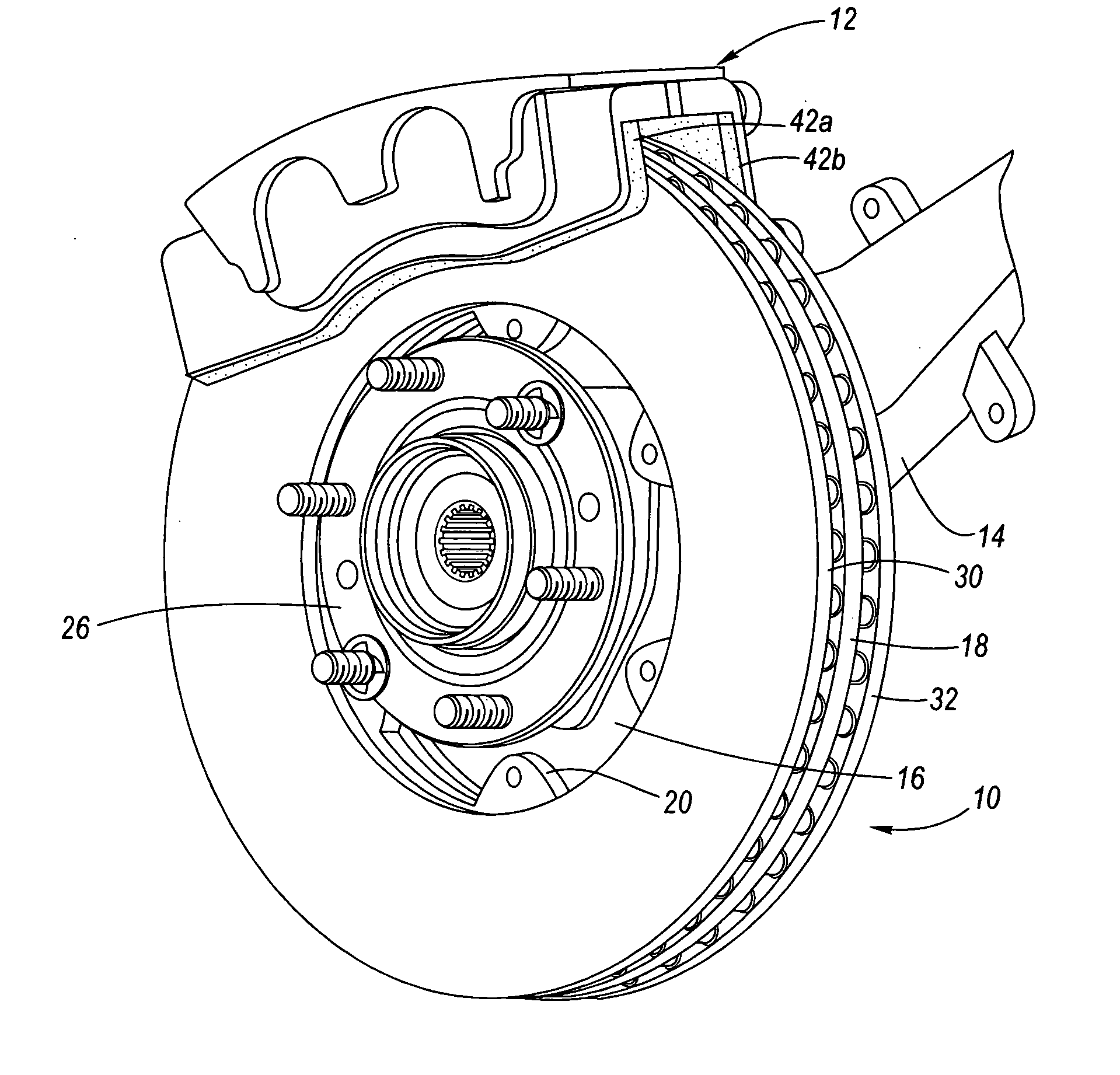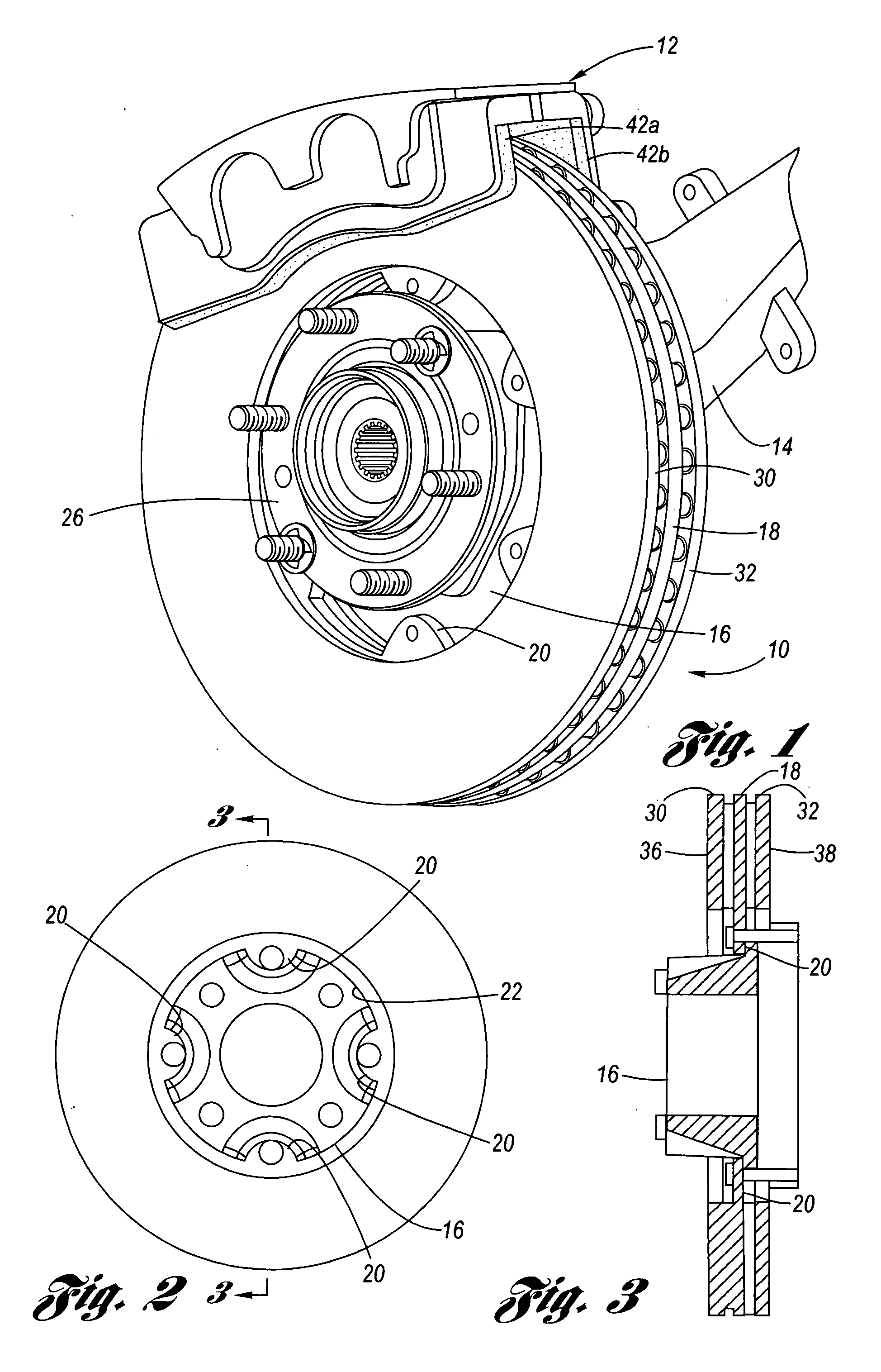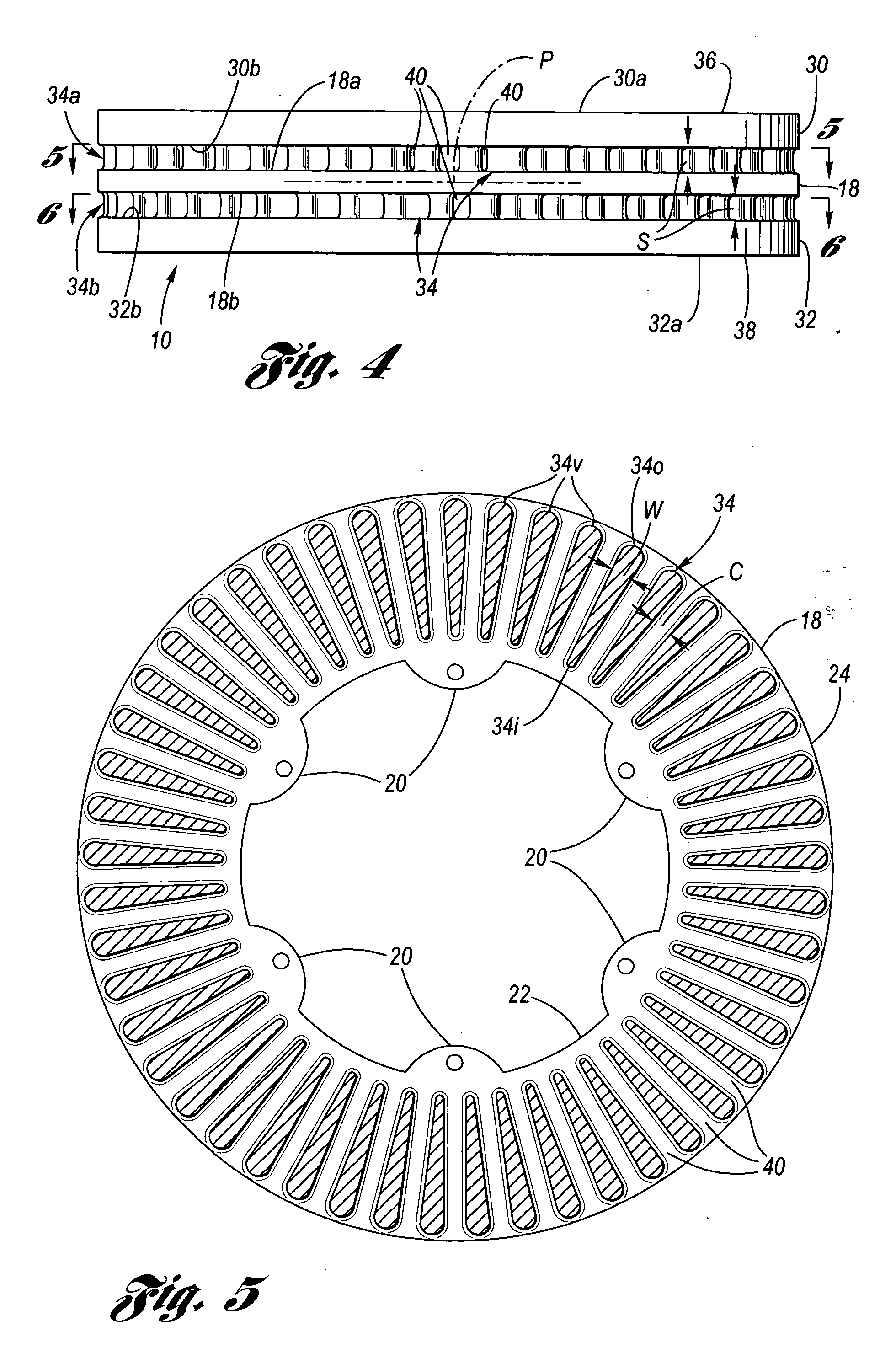Hatless brake rotor
a brake rotor and hatless technology, applied in the field of brake systems, can solve problems such as the potential for noise generation during braking, and achieve the effects of reducing brake pulsation, reducing braking noise, and improving air cooling
- Summary
- Abstract
- Description
- Claims
- Application Information
AI Technical Summary
Benefits of technology
Problems solved by technology
Method used
Image
Examples
Embodiment Construction
[0024] Referring now to the Drawing, FIGS. 1 through 3 depict various aspects of a preferred example of a hatless rotor 10 according to the present invention which is operatively integrated with a disk brake system 12 of a motor vehicle at a wheel location thereof. The axle 14 has an axle hub (not visible) to which is directly connected a rotor hub 16. The rotor hub 16 is, in turn, connected to an annularly shaped central disk 18 of the hatless rotor 10, via a plurality of mounting tabs 20 (by way of example six mounting tabs are shown in FIGS. 1, 5 and 7 and four mounting tabs are shown with the hatless rotor of FIG. 2) which are located at an inner rotor perimeter 22, and on the central plane P (see FIG. 4), of the hatless rotor. It will be seen that since the hatless rotor 10 is mounted directly to the axle hub via the rotor hub 16, that the wheel hub 26 connects directly to the axle hub independently of the direct connection of the hatless rotor to the axle hub. This feature iso...
PUM
 Login to View More
Login to View More Abstract
Description
Claims
Application Information
 Login to View More
Login to View More - R&D
- Intellectual Property
- Life Sciences
- Materials
- Tech Scout
- Unparalleled Data Quality
- Higher Quality Content
- 60% Fewer Hallucinations
Browse by: Latest US Patents, China's latest patents, Technical Efficacy Thesaurus, Application Domain, Technology Topic, Popular Technical Reports.
© 2025 PatSnap. All rights reserved.Legal|Privacy policy|Modern Slavery Act Transparency Statement|Sitemap|About US| Contact US: help@patsnap.com



